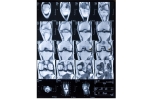What are common knee injuries?
The knee is the largest joint in the body, and one of the most easily injured. It is made up of four main structures: bones, cartilage, ligaments, and tendons.
- Bones. Two bones meet to form your knee joint: the thighbone (femur) and the shinbone (tibia). The kneecap (patella) sits in front of the joint to provide some protection.
- Articular cartilage. The ends of the femur and tibia, and the back of the patella are covered with articular cartilage. This slippery substance helps your knee bones glide smoothly across each other as you bend or straighten your leg.
- Meniscus. Two wedge-shaped pieces of meniscal cartilage act as shock absorbers between your femur and tibia. Different from articular cartilage, the meniscus is tough and rubbery to help cushion and stabilize the joint. When people talk about torn cartilage in the knee, they are usually referring to a torn meniscus.
- Ligaments. Bones are connected to other bones by ligaments. The four main ligaments in your knee act like strong ropes to hold the bones together and keep your knee stable.
- Collateral ligaments. These are found on the sides of your knee. The medial collateral ligament is on the inside of your knee, and the lateral collateral ligament is on the outside. They control the side-to-side motion of your knee.
- Cruciate ligaments. These are found inside your knee joint. They cross each other to form an X with the anterior cruciate ligament in front and the posterior cruciate ligament in back. The cruciate ligaments control the front and back motion of your knee.
- Tendons. Muscles are connected to bones by tendons. The quadriceps tendon connects the muscles in the front of the thigh to the patella. The patellar tendon, on the other hand, runs from the patella to the tibia.







